
Click here for images via this auction.
Details (apparently pulled from the Hartmann site which is still up, btw):
"Neuron's synthesis engine is powered by the technology found in neural networks (for more on this, see the section "Neural Networks"). It uses models as the basis for sound generation. In conceptual terms, these models are comparable to samples, and they are derived by analyzing audio samples. This means that in principle, any auditory event can provide the raw material for creating and processing sound in Neuron. It ships with some 100 of these models on its internal hard disk. Though this is a huge store of sound design resources, you are free to analyze audio resources (samples) of your own, using our proprietary ModelMaker software, and archive them in the form of user models. These models contain the actual sound as well as the parameter sets that were captured during neural analysis. Parameter sets are subdivided in up to three levels, and they may be manipulated via the resynators' sticks. That makes Neuron the first synthesizer offering dynamic parameter assignment tailored specifically to the sound that you select for processing. "
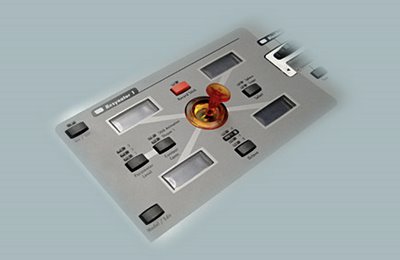
"The Resynators
Neuron features two resynators of identical design. Though comparable to a subtractive synthesizer's oscillators, each resynator contains one of the models described above rather than the basic waveforms found in a subtractive synthesizer's oscillators. Models may be selected freely for each resynator. The given pitch (octave / semitones / cents) is assigned to the selected model in the resynators.
Models are subdivided into regions called scapes and spheres. A scape puts all parameters associated with the formative qualities of a sound at your disposal, for example, the vibrations of vocal cords or a string. A scape serves to determine inherent attributes, for example, whether the sound is the product of a chaotic, disharmonic or harmonic oscillating system. By sphere we mean extrinsic sound-shaping factors, that is, the environmental conditions under which the sonic event occurs. This can include spectral processes, formants, resonance, sound absorption characteristics, and so forth.
The actual manipulation of a model - that is, invasive sound-sculpting - is performed in real time using the stick controller. The stick morphs between two opposite sonic attributes, and it does this selectively by scape or sphere and parameter level. This process is best explained using an example: Say resynator 1 contains a model called Flute. The neural process assigned the following scape parameter sets to this sound: Level 1 metal / wood and large / small. These parameters are placed in opposition to one another as shown in the illustration. The woodiness and size of the flute can be varied dynamically by joggling the stick. Level 2 is assigned wide / narrow and clear / rough. Level 1 settings remain enabled when this second level is selected, and the parameters offered at this level can be influenced in the same way. This means that you can edit the width and roughness of the flute's sound on the fly.
The same operating principle applies to all models, whereby their unique and individually generated parameter sets are addressed separately in each model's scape and sphere. This lets you do things like control the speed of a drum beat model in connection with the width or the metallic timbres of a sound. Presence may be manipulated in connection with the width of a pad sound. You can change the sound of a piano radically by varying the size of the instrument and bending the frame holding the strings as the instrument shrinks or expands. And these are just a few of the untold configuration and manipulation options.
Scape and sphere parameter editing can be performed at every level via a "hard-wired" ADSR envelope. As an alternative, stick movements can be recorded in real time and applied selectively to control the parameters of level and scape or sphere. This lets you program extremely lively, vibrant modulations as an integral component of a sound."
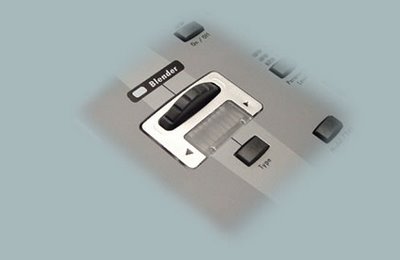
"The Blender
A blender is another newfangled control unit. Sweeping between resynators, it enables dynamic cross-fading between the two. It also lets you manipulate one resynator using another. Various types of blenders are available; they may be selected via the main display. In addition to adjusting the relative volumes (balance), blenders can be used to create morphing effects. A few examples follow:
* A pad can be chopped up rhythmically by syncing it to a drum loop. This generates alien-sounding rhythm clusters.
* A choir can be made to "sing" through the body of a concert grand piano.
* A snare drum can be made to strike the strings of a guitar, and so forth."
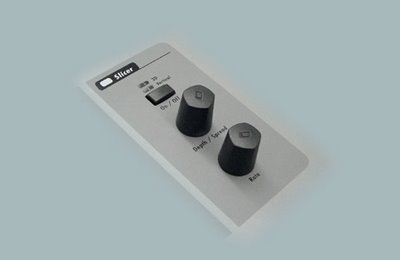
"The Slicer
Think of Slicer as an LFO module. It operates on the assumption that models contain tridimensional spectra. This means that Slicer can also be employed selectively as a sort of 3D LFO. Its depth and rate are infinitely variable. When Vertical mode is enabled, you can sweep freely among basic waveforms. Slicer is plugged into resynator 2 as a module, but you can also route it freely, for example, to the Silver unit or Free Envelope.
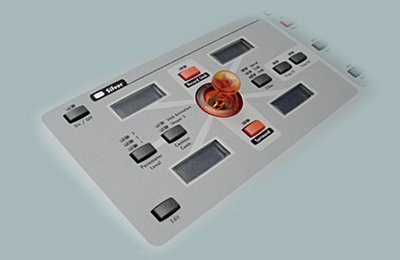
"Silver
As its name would suggest, Silver lets you put a lustrous shine on sounds. In addition to a high-quality multi-mode filter (24dB LP / 12dB LP / Special), it offers two multi-effect processors (time-based FX like chorus / flange / delay and frequency-based FX such as phaser / distortion / compressor / limiter). Like a resynator, it is controlled via a stick. This lets you do things like edit filter cutoff frequency and resonance simultaneously and at the same operating level. With up to three parameter levels to choose from, you can create musically meaningful combinations of up to three two-way parameter sets. Then you can sweep back and forth between the opposed parameters of these parameters sets simultaneously, processing them via any of the time- or frequency-based effects that you have at your disposal.
Neuron is the first and only synthesizer designed from the bottom up for Surround Mode (5.1) applications. Handling is easy - simply joggle the Silver unit's stick. A setup contains up to four sounds, and you can pan the sounds in a setup independently and to any position in the Surround field. Beyond that, you can record stick movements, creating tridimensional sweeps, and store these modulations as a component of a sound within a setup.
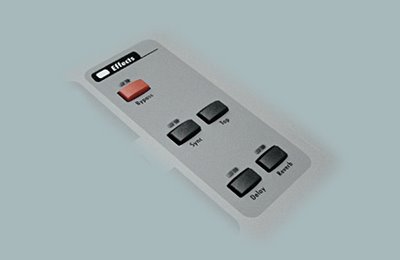
"The Master Effects Unit
Neuron also boasts an effects unit offering delay and reverb in excellent quality. You can sync the delay effect to external devices and signals, for instance, via MIDI clock. A tap function lets you enter delay time intuitively - manually, that is. These two effects are available for each setup comprising up to four sounds. Wet signals may be controlled separately, and processed signals are routed out via audio output pair 1 (analog or digital).

"Mod
Under the Mod module you find a freely routable Low Frequency Oscillator (LFO). Use this LFO to modulate different destinations inside the Neuron modules. The LFO offers 12 waveforms (Triangle, Sine, Saw Up, Saw Down, Square, Pos Tri, Pos Sine, Pos Square, Step Tri, Step Saw Up, Step Saw Down und Random). Rate and depth are freely adjustable and the LFO additionally offers a delay parameter to allow for softly increasing modulations.
General Facts and Features
Neuron is four-way multitimbral, meaning that it can render up to four sounds at once. Multi Set-Ups are generated in Set-Up mode. In this mode, different parameters affecting each sound within a setup can be edited in parallel (e.g. volume / panning / FX level / Midi channel / key window, etc.). You have four freely assignable continuous controllers that let you shape sound on the fly: a dial with a display unit, a continuous control pedal port, the pitch / stick controller's Y level, and a switch input that lets you do things like switch programs, tap in delay times, and toggle freely definable switches.
Neuron features six analog audio outputs wired as three stereo pairs. In Surround mode, these outputs are configured in 5.1 format (front L/R, back L/R, center and subwoofer). A stereo S/PDIF output is available for routing out digital signals. For the digital 5.1 edition, we will offer an optional optical ADAT interface. Slated for release in fall of 2002, this port may also be retrofitted."










































hahahaha this dude is on crack with that price
ReplyDeleteConsidering it just contains a PC motherboard and a hard drive, considering the usual depreciation for computer equipment it's worth about a grand now. God help you if the hard drive croaks.
ReplyDeleteThis guy's prices are not good. I am watching to see if people buy anything he's selling. If os, I'll list some equipment at inflated prices and see how it goes.
ReplyDeleteJust out of curiosity, has anyone out there gotten a Hartmann Neuron & found it interesting enough to keep?
ReplyDeleteI've only heard and saw some youtube demonstration... seemed like quite an interesting piece of synth. Abit pricey in my opinion...
ReplyDeleteI never realized it was a vector synth. From this description, the distinctive-looking joysticks turn out to be nothing special, and it could actually be less limiting to have a bank of knobs or sliders to control the various "scape" and "sphere" parameters independently.
ReplyDelete